
Posts Tagged: lygus
Celebrating the Crab Spider in Arachtober
It's Arachtober and that means celebrating arachnids for the entire month of October. Well,...
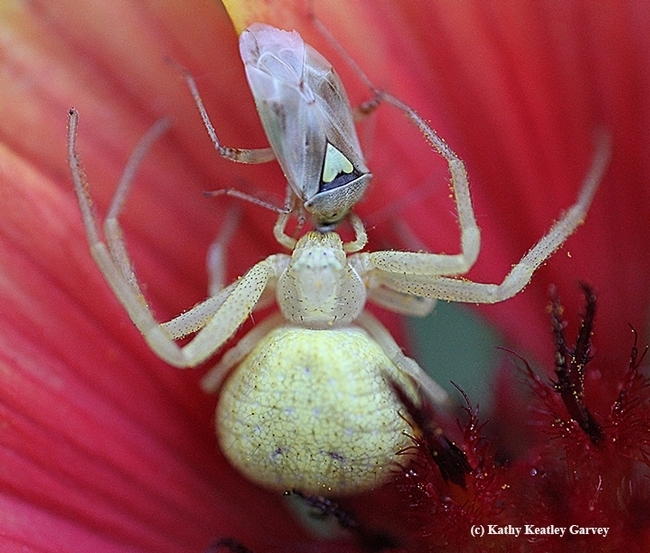
A crab spider eating a lygus bug, an agricultural pest in a Vacaville garden. (Photo by Kathy Keatley Garvey)
The Bee and the Lygus Bug
Ever seen a beneficial insect and a pest sharing the same blossom? At a recent visit to the UC...
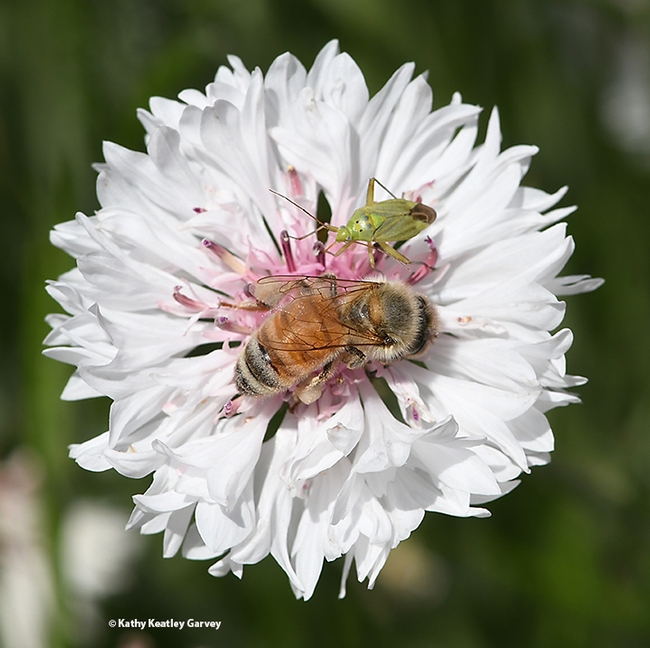
A honey bee and a lygus bug sharing a batchelor button in the UC Davis Ecological Garden. (Photo by Kathy Keatley Garvey)
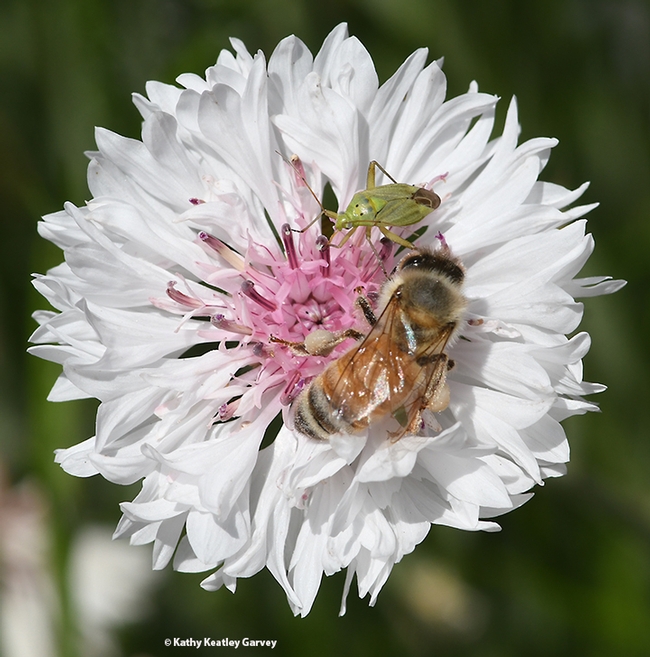
The honey bee edges closer to the lygus bug. (Photo by Kathy Keatley Garvey)
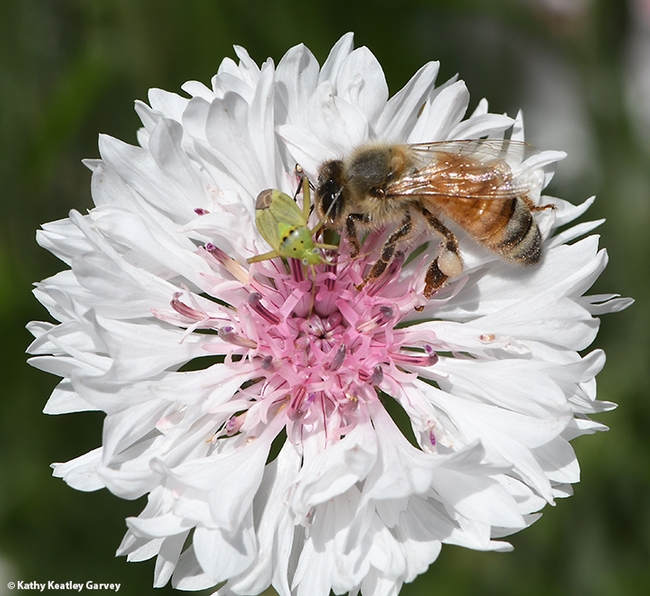
The insects meet, the honey bee, the beneficial insect, and the lygus bug, the pest. (Photo by Kathy Keatley Garvey)
Emily Bick's AAUW Grant: Targeting the Lygus Bug
Watch out, lygus bugs! Agricultural entomologist Emily Bick is targeting you. Lygus hesperus, a...
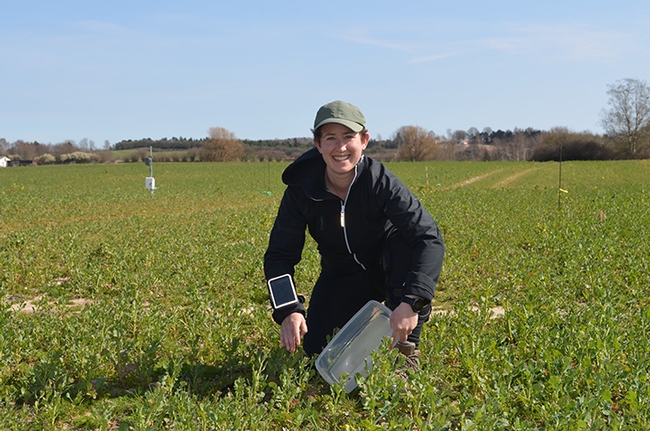
Agricultural entomologist Emily Bick doing field work in Denmark before the lockdown due to the coronavirus pandemic precautions..

Emily Bick (right) in an engagement photo with her fiance, Nora Forbes. Bick is an agricultural entomologist and a postdoctoral fellow in the lab of Lene Sigsgaard at the University of Copenhagan and Forbes is a statistician at the Danish Medtronic office.
You are welcome.
We finally have a label for the insecticide Sequoia. It will be a good one to have in our roster of insecticides in strawberry, not only because it is pretty darn effective in controlling lygus, but also because it can be rotated in with the remaining usable materials we have and keep them effective that much longer.
It does come with the caveat of only being 12 months long, but there always is the possibility of renewal plus the regular Section 3 label is being worked on at the Federal level. Use directions for the Section 18 for Sequoia attached below as a pdf file.
The only way to get these labels in California is to have the efficacy from the field to prove that the insecticide actually does what it is supposed to do. This was a job led out of this office of UCCE, and it was a major commitment that stretched over something like 5 years. My colleagues and I get up well before daybreak to beat the wind and do the sprays, are out there week after week to collect the samples, and spend many hours at the microscope counting the lygus, beneficials and other bugs. This was a ton of work over many years and effort put in by some very committed people, in particular Shimat Joseph and Monise Sheehan of UC Cooperative Extension and Hillary Thomas at the time with the CSC, but at the end of the day the effort very much worth it because we got you your Sequioa label for lygus in strawberries.
I am very grateful to Dow Chemical, now Corteva Agrisciences, Jean-Mari Peltier who sheparded the application through the CDPR and all the growers who collaborated with us for the tremendous support they gave us over the years to get this label to you.
Growers, this is a Section 18, so as always you have to get it on your restricted use permit.
Questions about efficacy? Lots of studies on this site, type in lygus or sulfoxaflor in the search box and you'll see plenty of information on it.
You are welcome.
Sequoia Strawberry Sec 18 Final Label 10.30.18
Paper: Evaluating the Utility of an Electrostatic Sprayer and a Tractor Mounted Vacuum for Lygus Management in Strawberry
Former UCCE Entomology Advisor Shimat Joseph and I just had the linked paper below published in Crop Protection.
Excellent overview of the lygus problem in California strawberries and evaluation of a combination of bug-vac use and the insecticide sulfoxaflor (not registered yet, but useful for this study since it actually works) for management of this pest.
A few points out of the paper to take back to the farm:
1- The use of the bug-vac alone was not sufficient to reduce lygus populations to below that of the untreated check.
2- Treatments using the insecticide sulfoxaflor alone and in combination with the bug-vac reduced the numbers of lygus and the number of cat faced fruit.
3- Neither the bug-vac or sulfoxaflor had any effect on predaceous heteropterans and spiders compared to the untreated check.
The implication out of this work and paper is that the use of an effective insecticide will continue to be the best tactic for control of lygus and mitigation of its damage in strawberries.
Link is here, it will be active until the beginning of October:
https://authors.elsevier.com/a/1XWqVxPFYekQG
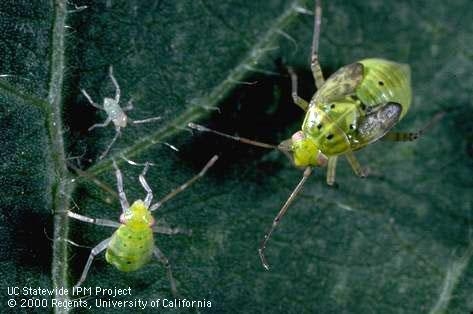
I-HM-LDES-NM
